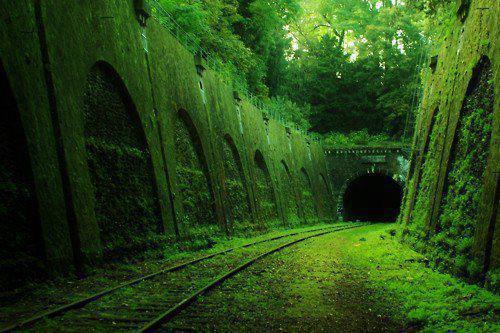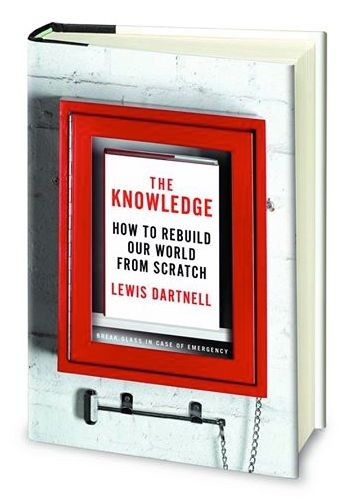Ruin photography
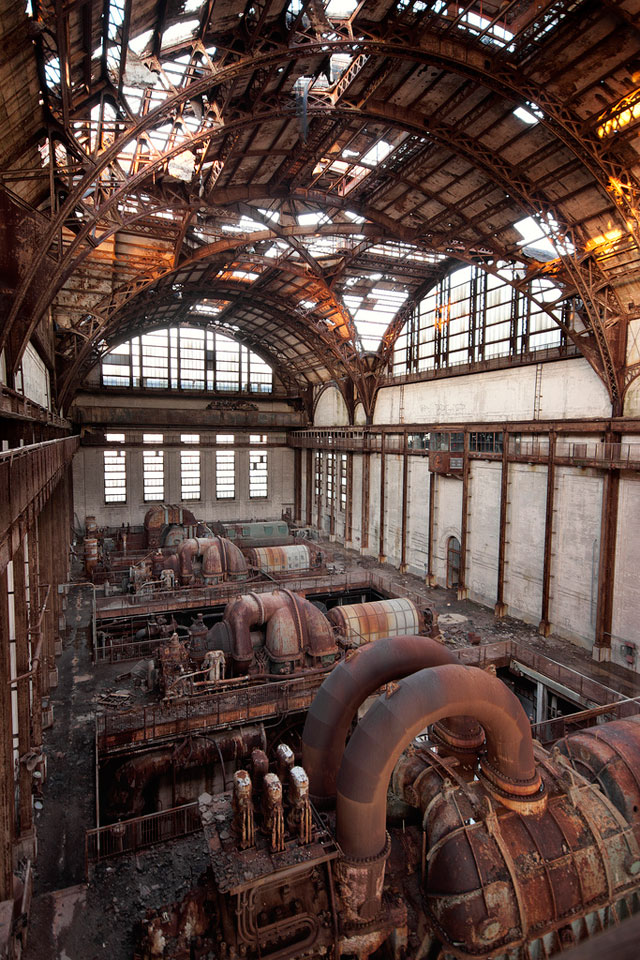
As Chapter 2 of The Knowledge explores, once our technological civilisation collapses, the machinery and buildings we leave behind will begin inexorably to corrode and decay and nature will seize its opportunity to reclaim our urban areas. The huge body of ruin photography and images of derelict and abandoned places today offers us a glimpse of what this post-apocalyptic future will look like for the survivors.
If you appreciate this alluring beauty of ruins and decaying urban spaces, an aesthetic appeal that has been edgily dubbed ‘ruin lust’, there are a number of good recent publications you also might like. Try Andrew Moore’s photographs in Detroit Disassembled, Forbidden Places and Forbidden Places 2 by Sylvain Margaine, and RomanyWG’s Beauty in Decay. The Atlas Obscura website is well-worth an explore, and of course, also see the post on this website on post-apocalyptic art.
Hashima Island, off the coast of Japan, was once home to a dense community of workers living there for the easy access it offered to the undersea coal mines. But the facility was closed in the mid-1970s, as petroleum came to replace coal in the Japanese economy, leaving behind a ghost town that has been relentlessly decaying ever since. ↓
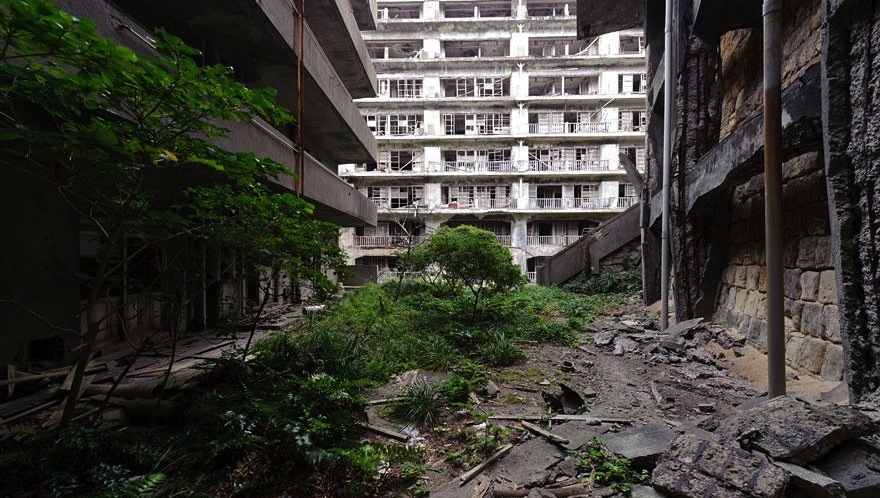
Keelung City, in Taiwan, was apparently abandoned even before it had finished being constructed. Nature has made surprising progress in recolonising its territory, with the forest already thickly filling the canyon-like streets. ↓
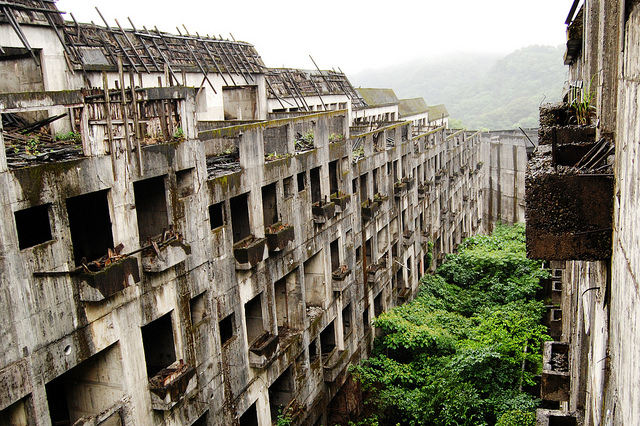
The town of Pripyat was established in Ukraine in 1970 to house the staff working in the nearby Chernobyl nuclear power plant. But with the melt-down disaster in 1986 the whole area was evacuated and Pripyat remains to this day a radioactive wasteland deserted of humans and reverting to nature. ↓
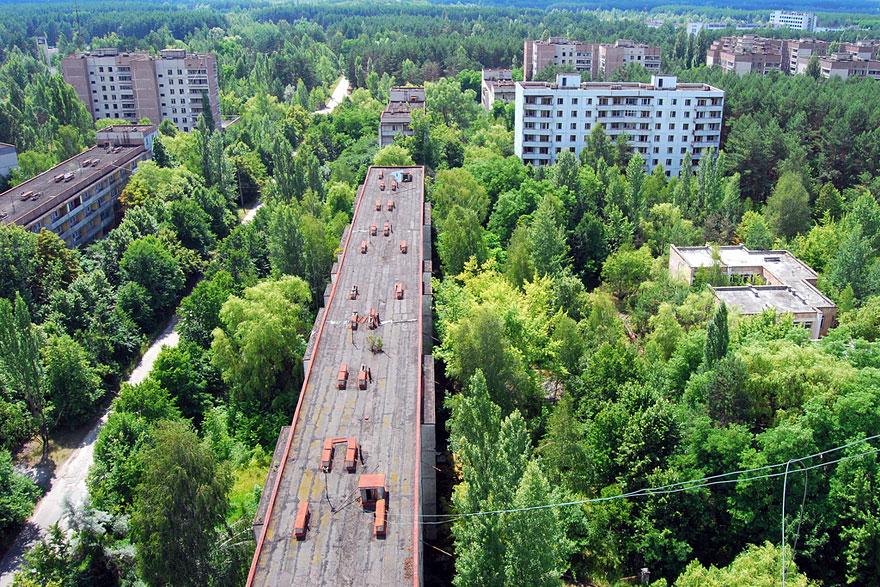
Long-abandonned cottage on the Kerry Way walking path between Sneem and Kenmare in Ireland. ↓
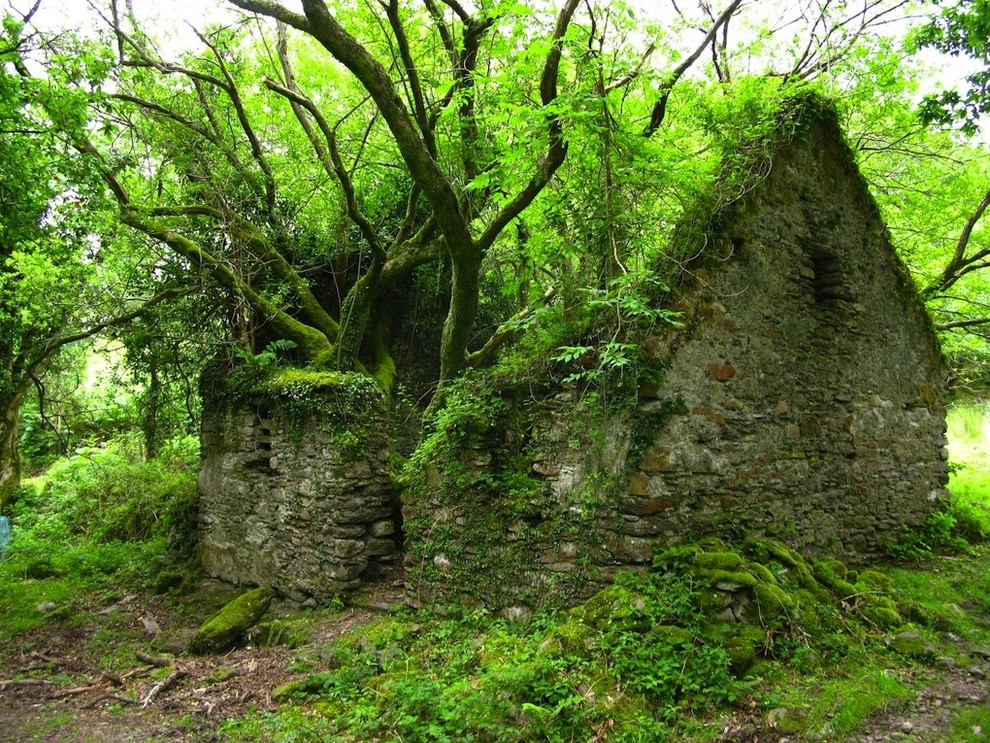
It’s not only lush vegetation that re-occupies our derelict buildings; the elements force their way everywhere as well. Here, on the left, sand floods into the rooms of buildings in Kolmanskop, an abandoned mining town in the Namib desert in southern Namibia. And on the right it is snow that invades the interior space. ↓
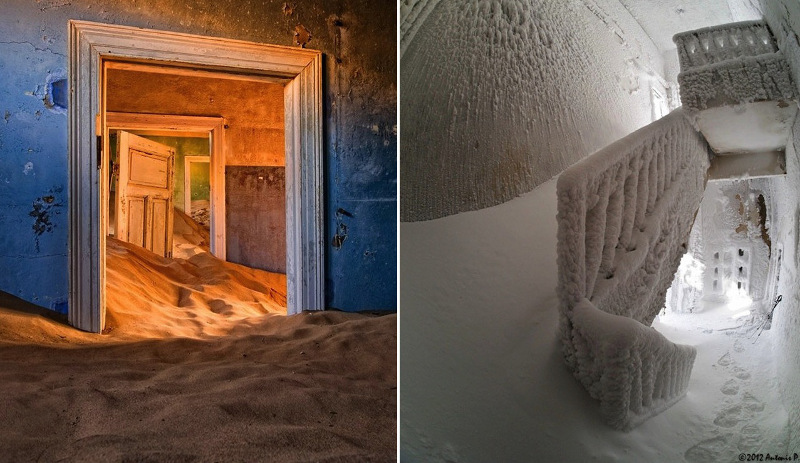
After technological civilisation collapses our once bustling and noisy transport systems will fall silent and still. Highways densely packed with halted cars will come to resemble this old auto graveyard just outside the town of Chatillon in Belgium. ↓
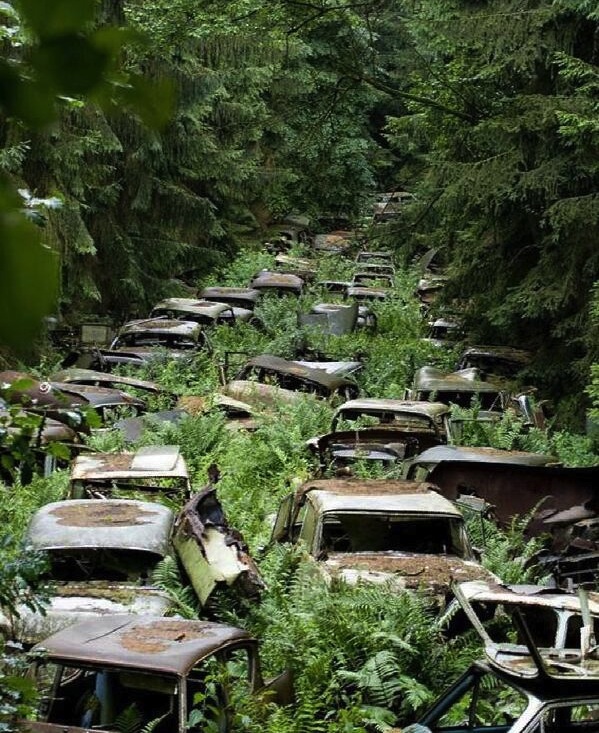
Trains and the steel tracks they rest upon will corrode and crumble alike, as the vegetation grows thick around them, like in the abandoned Częstochowa Train Depot in Poland (below) and this disused section of track and tunnel in France (beneath). ↓
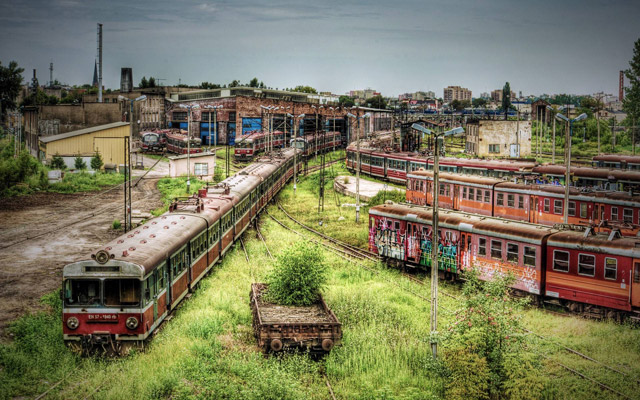
- source: imgur
Great metal-hulled ships will break their moorings and float adrift, roaming the ocean’s currents until they are driven ashore and rust where they lay grounded, like the shipwreck of the SS America in Fuerteventura, Canary Islands (below) or the remains of the SS Ayrfield in Homebush Bay, Australia (beneath). ↓
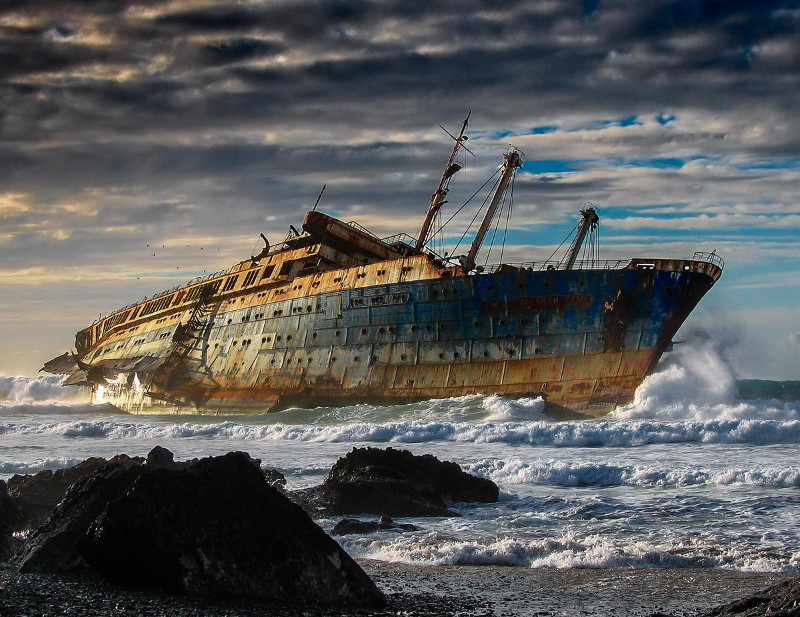
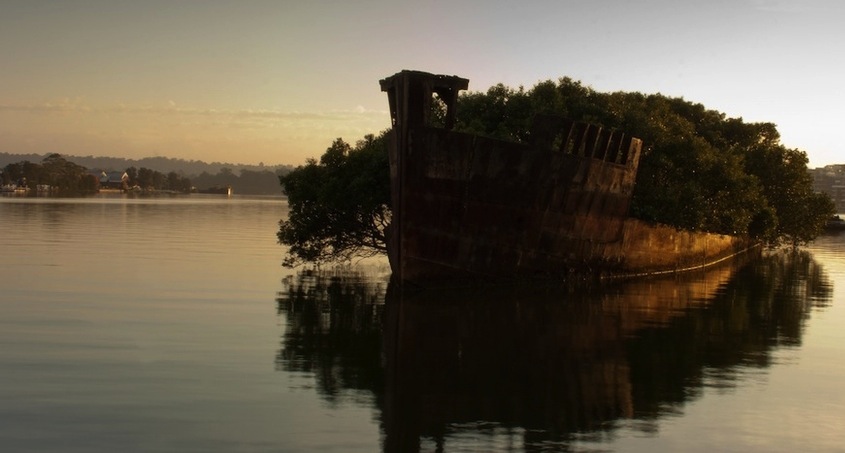
Other vessels will have their bellies sliced open and sink in deeper water, like this hapless yacht in Antarctica. ↓

Perhaps the most poignant scenes of decay and ruin in the aftermath will be places that once flowed with carefree families and echoed with laughter: theme parks and fairgrounds. The roller-coaster here is in the abandoned Six Flags Jazzland, New Orleans (below), and the overgrown dodgems have been mouldering in Pripyat since the Chernobyl disaster (beneath). ↓
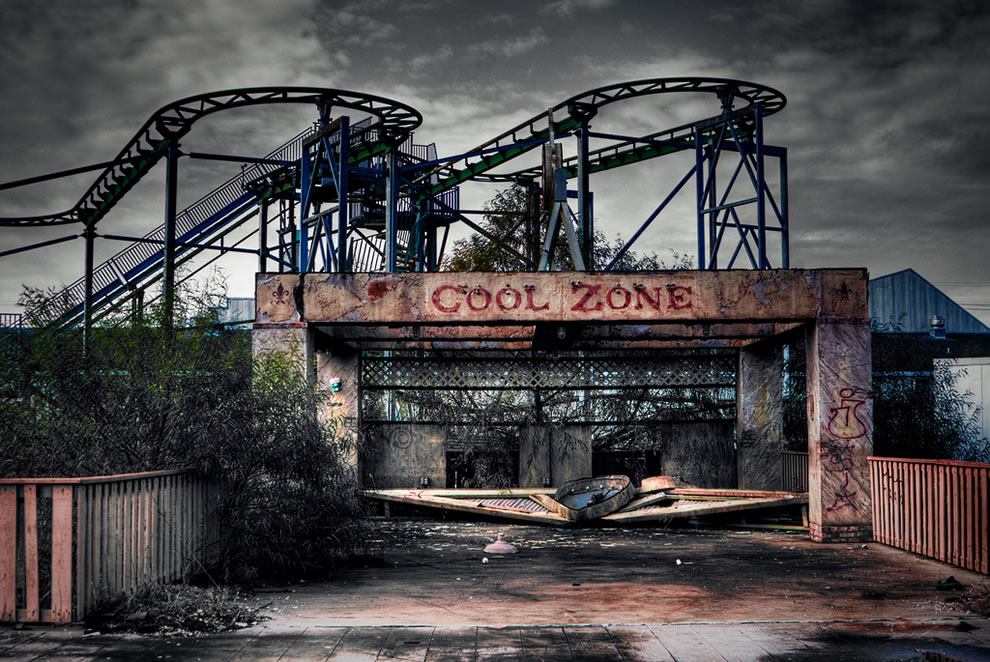
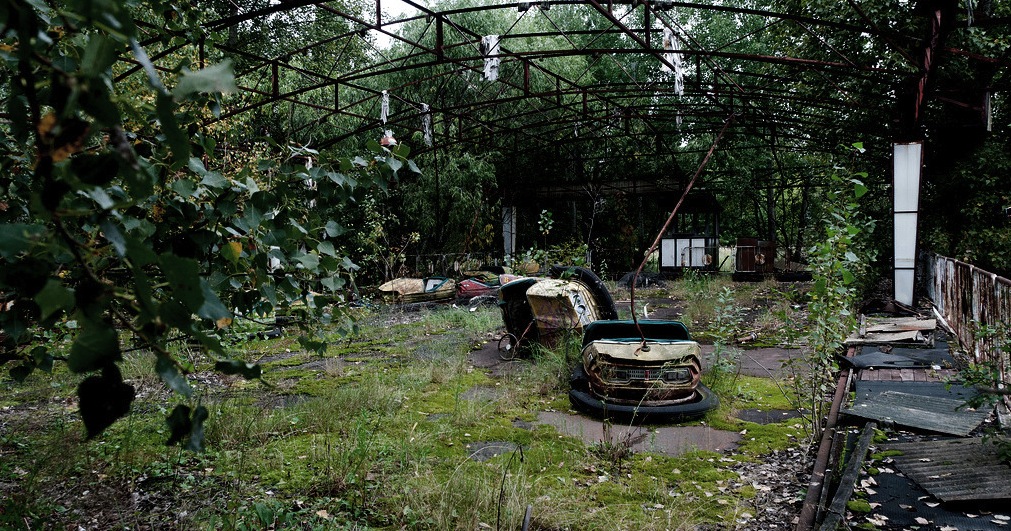
This final image is not ruin lust per se, but demonstrates very nicely what the skyline of major cities will look like as soon as the power grid goes down. It is a digitally combined photograph, showing the silhouette of an uncannily dark New York against an astronomically correct view of the Milky Way in the night sky.
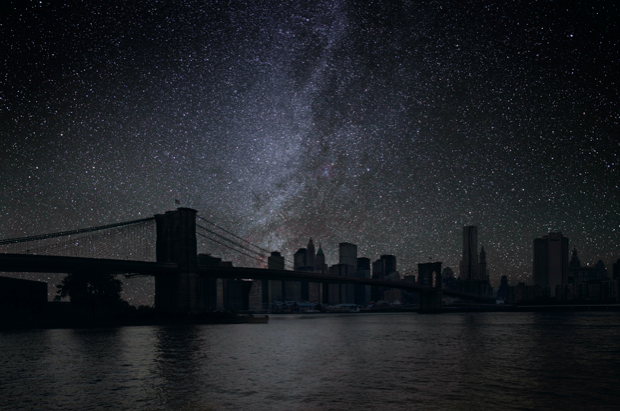
See Also:
- Chernobyl’s Ghost Cities: Atlas Obscura
- Valley of the Mills: Atlas Obscura
- Volkloinger Ironworks (first industrial UNESCO site): Atlas Obscura
- Bay of Nouadhibou ship graveyard: Atlas Obscura

